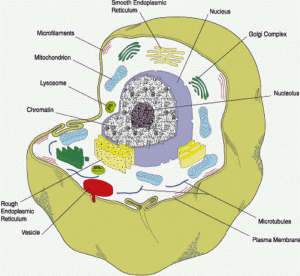
A team, which included researchers from Case Western Reserve University School of Medicine released information about their study and what they had discovered, which could lead to remarkable developments in patients who are trying to manage diabetes.
There have been many studies when it comes to insulin and how it interacts with cells. However, the international group of scientists have now found a proven answer. Insulin attaches to a cell and allows the cell to convert sugar into energy. As a result of this process, the insulin itself changes its form.
One of the leaders of the team and Case Western Reserve biochemistry professor and department chair Michael A. Weiss, MD, PhD, MBA said, “These findings carry profound implications for diabetes patients. This new information increases exponentially the chances that we can develop better treatments — in particular, oral medications instead of syringes, pens or pumps.”
Weiss is also the Cowan-Blum Professor of Cancer Research at the School of Medicine. He is world renowned for his work in the field of insulin. It was in 1991 that he implemented nuclear magnetic resonance techniques to describe the structure of insulin. Recently, Weiss discovered a preliminary version of the hormone that does not need refrigeration.
Most promising in the case of insulin however, is the finding of how insulin works with cells. It has been upon the minds of scientists and researchers since 1969 to discover the link between cells and insulin, since the University of Oxford’s late Dorothy Hodgkin and colleagues first labeled insulin’s structure.
Weiss says, “There’s been a logjam in our understanding since then,” Weiss said. “We hope that we’ve broken the logjam.”
To implement the study, Weiss joined with Associate Professor Mike Lawrence, of the Walter and Eliza Hall Institute of Medical Research in Melbourne, Australia who was also led the project alongside Weiss. Scientists from University of Chicago, the University of York in the United Kingdom, and the Institute of Organic Chemistry and Biochemistry in Prague in the Czech Republic were all incorporated into the project as well.
They established that cells absorb sugar from food for energy for the body to use. However, glucose cannot pass through a cell’s membrane without the assistance of insulin, which comes from the endocrine cells located in the pancreas. For the immersion of sugar, many cells have “insulin receptors” that bind with the hormone as it drifts into the bloodstream.
Lawrence says, “Both insulin and its receptor undergo rearrangement as they interact. A piece of insulin folds out and key pieces within the receptor move to engage the insulin hormone. You might call it a ‘molecular handshake.”
Knowledge of how cells and insulin bind provides a great asset to the medical science of diabetes itself, leaving researchers and diabetic patients alike with hope for possible advances in how diabetes is treated, leading to a potential cure.